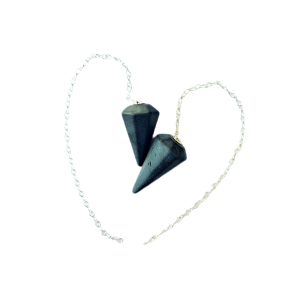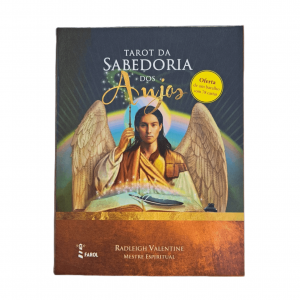Description
The sodalite and the star stone are two crystals with healing and energetic properties that bring many benefits to those who use them.
Sodalite is a blue stone with white flecks, and is known to help encourage clear and assertive communication, both with others and with ourselves. It is often used to help overcome shyness and social anxiety, and can also help increase self-confidence and self-expression. Sodalite is also known to help improve intuition and inner vision, making it a useful stone for meditation.
The star stone, on the other hand, is a dark stone with small bright spots that look like stars in the night sky. It is known to bring mental clarity and help relieve stress and anxiety. It is often used to help improve concentration and focus, making it a useful stone for students and professionals who need a clear and productive mind. The star stone is also known to help promote restful and deep sleep, and can be used as a healing stone for insomnia problems and other sleep-related difficulties.
Both stones are considered protection stones, helping to protect against negative energies and protecting the aura. They are also used to help balance the chakras and promote emotional and physical healing. Together, sodalite and star stone can help improve clear communication, mental clarity, concentration and focus, making them valuable stones for those seeking to improve their quality of life and overall well-being.
About Japa Malas
A Japa Mala, or simply suitcase (Sanskrit: ,いいい; mālā), refers to a series of accounts, popular in India and Buddhist countries, that are used to keep count while reciting, singing or mentally repeating mantras or the name(s) of a particular deity. In both India and Asia, the recitation of mantras is a very popular practice. As sacred utterances, mantras can be silently repeated or sung for different reasons and purposes. Used predominantly by Hindus, Buddhists and Sikhs as auxiliaries of meditation and devotion, mantras are sound vibrations that instill concentration in the devotee and facilitate spiritual growth.
Japa Mala’s devotional practice resembles the Catholic use of the rosary – the Rosary. Both strings of beads help their respective religious believers record the number of times the prayer/mantra has been said.
The Sanskrit word Japa is derived from the Jap root, which means “to pronounce in a low voice, to repeat internally, to murmur”.
A wide variety of materials is used to make suitcase accounts. In Hinduism, the Vaishnavas usually use Tulsi’s Japamala beads. The Shaivitas use Rudraksha’s accounts. Aghori practitioners usually use human skull fragments for their bags.
Some Tibetan Buddhist traditions call for the use of bone (animal, most commonly yak) or sometimes human, with the bones of past Lamas being the most valuable. Others use wood or seeds from the Bodhi tree or seeds from the Lotus plant. Semi-precious stones, such as
Carnelian
e
Amethyst
can also be used. The most common and least expensive material is sandalwood. In Hindu Tantra, as well as in Buddhist Tantra or Vajrayana, the materials and colors of beads can relate to a specific practice.
There are several pieces and all of them vary in color, dimension and texture because they are natural and unique crystals in their essence
If you have any questions regarding this product on the Templo de Buda website, you can contact by Whatsapp, email,
Instagram
or
Facebook
.
If you want help cleaning your crystals, Selenite is the most appropriate crystal, but you can see how to treat your crystals here
Wholesale
There are special prices for resale. You can see more here











Reviews
There are no reviews yet.